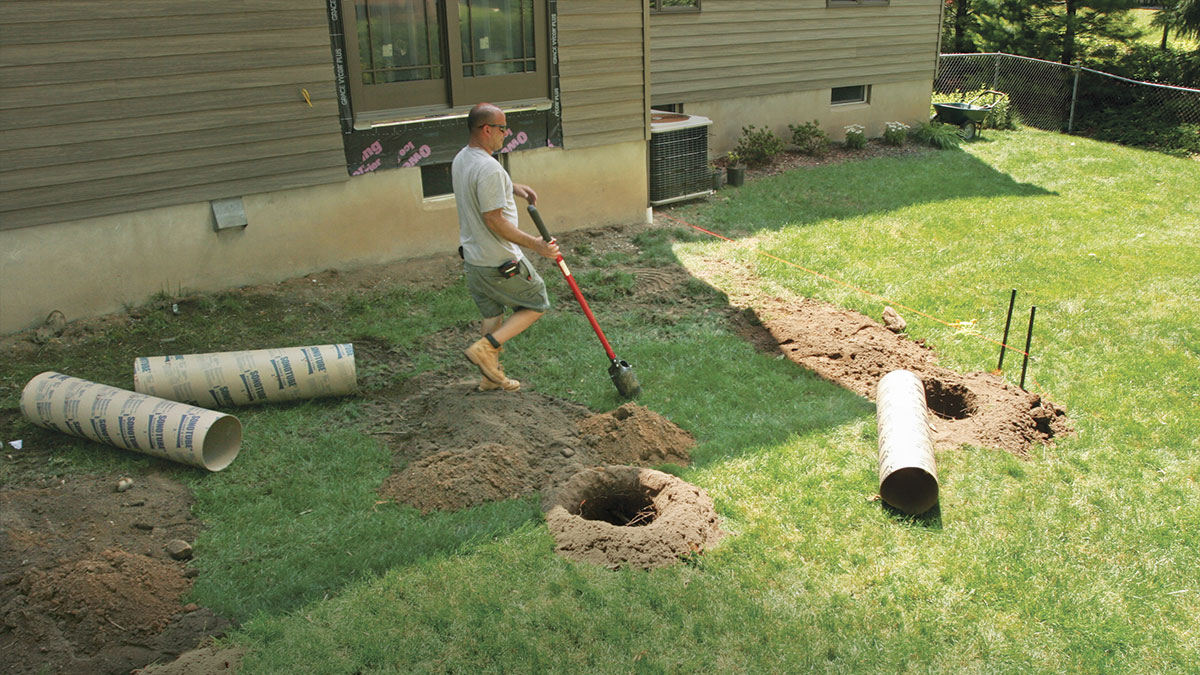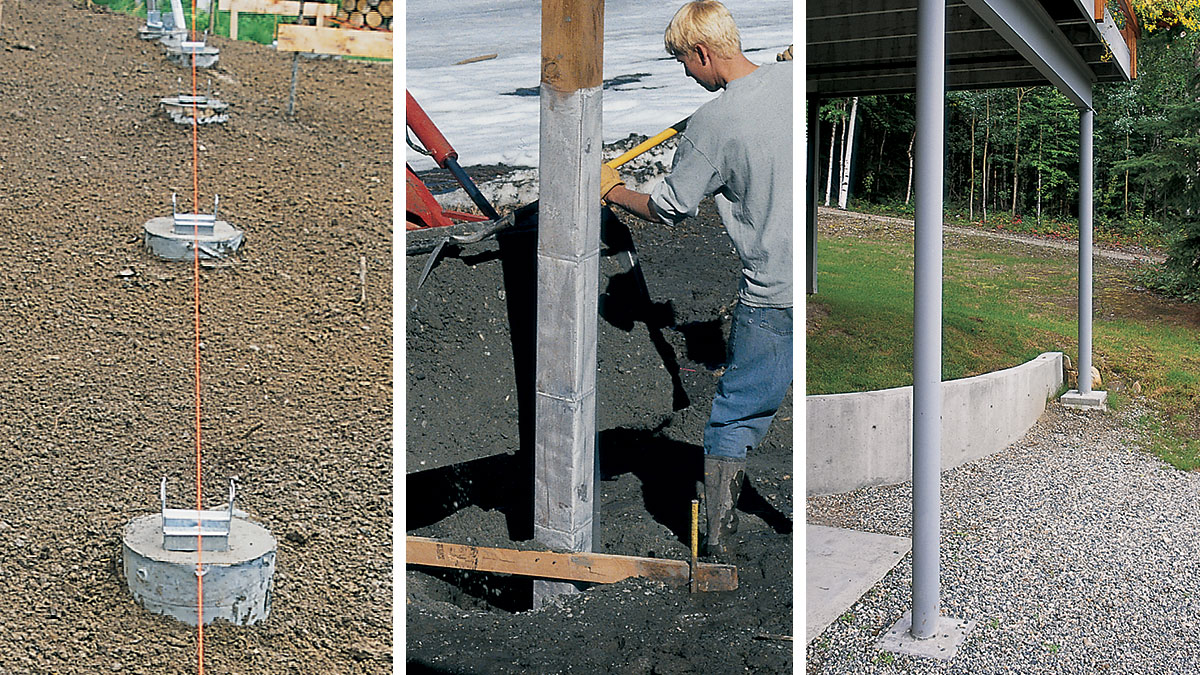Deck Footings Demystified: Your Blueprint for a Safe, Durable Outdoor Sanctuary
Deck Footings Demystified: Your Blueprint for a Safe, Durable Outdoor Sanctuary
Blog Article
Specialist Tips for Putting Up Deck Footings to Support Your Outdoor Room
When it concerns developing a deck, among the most crucial elements to take into consideration is the setup of appropriate grounds. These footings are the structure whereupon your exterior area will relax, providing security and assistance for years to come. What exactly does it take to set up deck grounds correctly? In this conversation, we will check out professional pointers and techniques that can assist make sure a long lasting and successful deck installment. From selecting the appropriate kind of footings to staying clear of typical blunders, we will offer you with the understanding and understandings you require to with confidence start your deck-building trip. So, allow's dive right in and uncover the secret to a lasting and strong exterior space.
Significance of Appropriate Deck Footings
Proper deck footings are vital for guaranteeing the security and longevity of your exterior area. Without solid and correctly mounted footings, your deck may come to be unstable, leading to security threats and costly repair services.

In addition to stability, correct deck footings additionally contribute to the long life of your outside space (Deck Footings). Footings that are made and constructed to stand up to the elements and dirt conditions in your location will certainly assist prevent the deck from clearing up or changing gradually. By making sure the footings are effectively sized and installed, you can lessen the risk of damages to the deck framework, expanding its life expectancy and minimizing the need for costly fixings or substitutes

Choosing the Right Type of Footings
When picking the appropriate kind of footings for your deck, it is very important to think about variables such as dirt conditions, neighborhood building codes, and the total style of your outside room. The kind of footing you choose will certainly play an important role in making certain the security and longevity of your deck.
One common kind of footing is the concrete footing. Concrete grounds are appropriate for the majority of dirt problems and provide superb assistance for decks. They are commonly mounted below the frost line to protect against moving and clearing up as a result of freezing and thawing cycles. Another option is helical piers, which are excellent for locations with unsteady soil or high water tables. These piers are screwed right into the ground and provide solid support for the deck.
Sometimes, you might need to use specific grounds, such as stack footings or deep structures, if you are developing a multi-level or big deck. These grounds are created to disperse the weight of the deck over a larger location, ensuring stability and avoiding resolving or sinking.
Before choosing a sort of footing, it is important to consult neighborhood building codes and laws to make certain conformity. Furthermore, think about the style and intended use your exterior room. Aspects such as the size, shape, and load-bearing requirements of your deck will certainly affect the kind of footing that is most appropriate.
Preparing the Ground for Footing Installment
To effectively prepare the ground for footing installation, it is important to examine the dirt problems and take needed steps to make certain stability and sturdiness of the deck. The first action is to dig deep into the location where the footings will certainly be mounted.
Once the area has been excavated, the following step is to compact the dirt. This can be done using a plate compactor or by making use of a hand meddle. Compacting the dirt assists to get rid of any type of gaps or air pockets, which can lead to settling and instability with time.
After condensing the dirt, it is very important to lay a layer of gravel or smashed rock at the end of the excavation. This will certainly provide drainage and aid to stop water from pooling around the grounds, which can bring about disintegration and instability.
Step-by-Step Guide to Installing Deck Footings
After properly preparing the ground for footing installment, the next step is to start the process of installing deck footings. This detailed guide will offer you with a you could try here clear understanding of how to set up deck footings for your outside area.
Establish the place: Beginning by marking the settings of the deck grounds using stakes and string. Make certain that the locations straighten with the design and design of your deck.
Dig the holes: Make use of an article hole digger or an auger to dig the openings for the grounds. The depth and diameter of the openings should remain in accordance with local building codes and the details needs of your deck style.
Level the holes: Utilize pop over to this site a level to make certain that the openings are dug to the correct depth and are degree with each other. (Deck Footings)
Include gravel: Area a layer of crushed rock at the end of each hole to improve water drainage and protect against the wood from decomposing.
Put the footings: Put the footings right into the openings, seeing to it they are degree and plumb. Make use of a level and a gauging tape to ensure precision.
Safeguard the grounds: Pour concrete into the holes around the footings, loading them to the top. Utilize an article level to guarantee the grounds remain degree as the concrete sets.
Enable time for healing: Let the concrete cure according to the producer's instructions before proceeding with the deck building.
Typical Errors to Avoid During Footing Installation
One crucial element to take into consideration during the setup of deck footings is staying clear of common blunders that can jeopardize the stability and durability of your outdoor space. While deck footings may appear like a uncomplicated and simple part of the building and construction procedure, overlooking certain aspects can cause costly fixings and potential safety threats down the line.

Additionally, ignoring to set up proper water drainage procedures can trigger water to collect around the grounds, resulting in rot, degeneration, and the eventual weakening of the deck's structure. In addition, making use of the wrong type of footing product or failing to properly secure the grounds can jeopardize their structural stability.
To prevent these errors, it is important to talk to a specialist or comply with sector standards to make certain appropriate ground setup. By doing so, you can ensure the stability and longevity of your exterior room, supplying a satisfying and safe environment for several years ahead.
Final Thought
Finally, mounting appropriate deck grounds is vital for the security and durability of your outdoor area. By selecting the ideal kind of footings and adequately preparing the ground, you can ensure a solid structure for your deck. Adhering to a step-by-step overview and avoiding typical errors during footing setup will further boost the longevity and security of your deck.
Proper deck grounds are crucial for making sure the stability and long life of your exterior area. The grounds offer as a link in between the ground and the deck, permitting the weight of the deck and its residents to be distributed evenly right into the dirt.One common kind of ground is the concrete footing. Insert the footings: Put the footings right into the holes, making certain they are level and plumb. Safeguard the grounds: Pour concrete into the holes around the grounds, loading them to the top.
Report this page